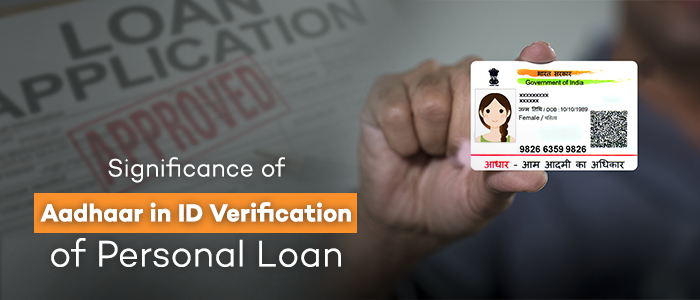A few years ago, more than half a billion people in India had no official ID of any kind which made it impossible for them to receive government aids, open a bank account, avail a loan, get a driving license, and so on. Also for availing services like personal loans, or opening a bank account required a number of documents like address proof, birth proof, identity proof, etc. which would often lead to confusion due to discrepancies and delays in approvals.
Indian Government launched Aadhaar Card, in April 2010 with an aim to provide a foundation for better access to services for a large segment of the population and since then it has massively changed the way government services were delivered. Today, it is being used not just as a proof of identification of citizenship but to avail various services like opening a bank account, availing personal loans, getting a new sim card or a PAN card, filing income tax returns, etc. According to a report published in a leading daily, more than 111 crores out of a population of 125 crores + today have Aadhaar card. This makes it the biggest biometric database on Earth.
How it all began:
Aadhaar card is a 12 digit unique identification number given to all the citizens by the government of India by collecting their fingerprints and iris scans. The government launched the Aadhaar card with the following objectives:
- To give universal identity to every Indian citizen
- To introduce a versatile card that can be used as an identity proof, address proof and age proof so that Indians don’t have to carry multiple documents when applying for any government service
- To help the citizens avail various government subsidies eliminating the need for middlemen
Read more interesting benefits of Aadhaar here: Benefits of Your Aadhaar Card
Aadhaar Card for financial inclusion:
For years, India’s financial strategy tried to expand access by opening more bank branches but this resulted in high operating costs for low-value services driven by paper-based verifications. Aadhaar overcame these costs using technology through e-KYC for users. This has helped in the financial inclusion and providing easy access to loans. Increasing access to financial services can lead to increased economic prospects for individuals and communities.
Impact of Aadhaar on private sectors
While the Indian government has made it mandatory for all Indian citizens to have an Aadhaar card to avail government services, even the private sectors have started relying on it to verify candidates while hiring them, for opening a bank account and for other services. Also, online finance providers are asking consumers to get the KYC linked with their Aadhaar card to avail of an instant cash loan.
With the rise of Digital India, people have started relying on online finance providers for availing hassle-free and quick cash loans. But a few years ago, availing loans was quite laborious since it required carrying a number of documents to the banks, standing in long queues and waiting for weeks from the bank to hear for approval. This was mainly because the verification process used to take days and sometimes even weeks.
Today, digitization and Aadhaar Card has revolutionized the loan approval and disbursal process. With the help of technology, online finance providers have recently launched paperless electronic-KYC (e-KYC) where the customers don’t have to submit physical documents for loan approval. It links your Aadhaar card with your KYC to authenticate your identity through one ID only. This has made the verification process extremely easy and quick and has led to instant disbursal of cash loan.
Security concerns with Aadhaar Card:-
Today, the Aadhaar database is one of the largest government databases in the world which contains both demographic and biometric data of the citizens and this is exactly why it has always been under the radar for security shortcomings. In the last year, there has been a lot of instances where the Aadhaar data was leaked through government websites. Apart from this, there were reports of gangs generating fake and duplicate Aadhaar cards and selling the Aadhaar card details to service providers.
The launch of Virtual IDs to protect privacy:-
In order to address these security concerns, UIDAI introduced a new concept of Virtual ID, a 16 digit random number mapped to Aadhar number, which can be generated by the Aadhaar card holder from the UIDAI website. It enables users to not share their 12 digits unique identification number for authentication purposes. Virtual ID gives limited details like name, address, and photograph, which are enough for any verification.
Read More: 5 Easy Steps to do Online KYC for your Home Credit Loan
How secure is Virtual ID? How is it different from Aadhaar?
Virtual IDs give an extra layer of security to your Aadhaar biometric and demographic details. This ensures that the agencies don’t have access to your Aadhaar number thus reducing the chances of financial frauds or profiling.
Companies, while authenticating your verification, are only shown your virtual ID and receive a UID token that confirms it is mapped to your Aadhaar number. Also, one cannot derive the Aadhaar number from the Virtual ID. It is temporary and revocable which means even if an agency stores your virtual ID to profile you, it won’t matter since it is not permanent and can be changed. A user can generate as many Virtual IDs as he or she wants. Once a fresh Virtual ID is generated, the older one gets canceled.


NICE
Thanks
Nice loan
Nice
thanks for your help
nice loan
Nice loan
Very nice loan
Nice
Very good company Service well done
Super fast approval